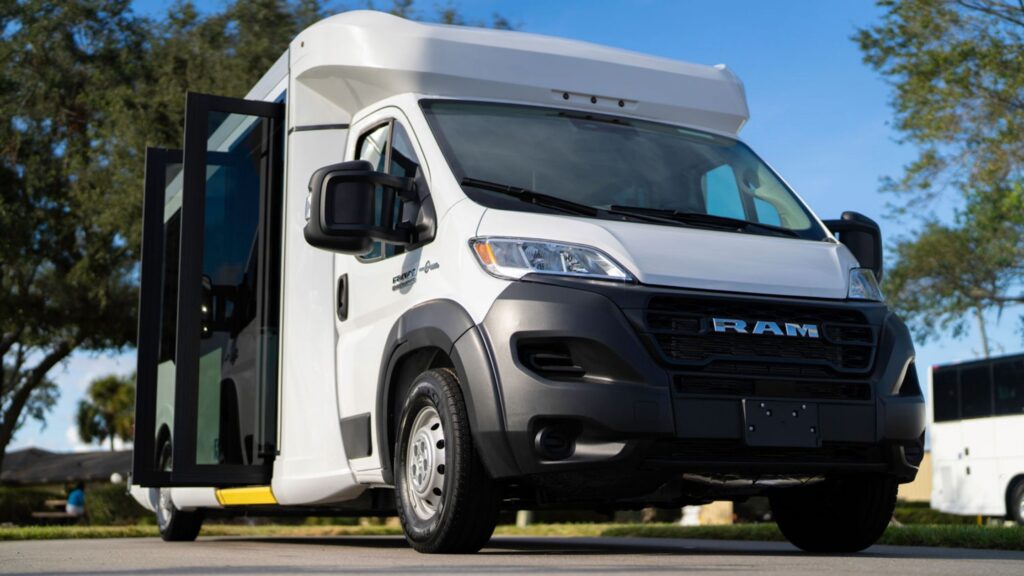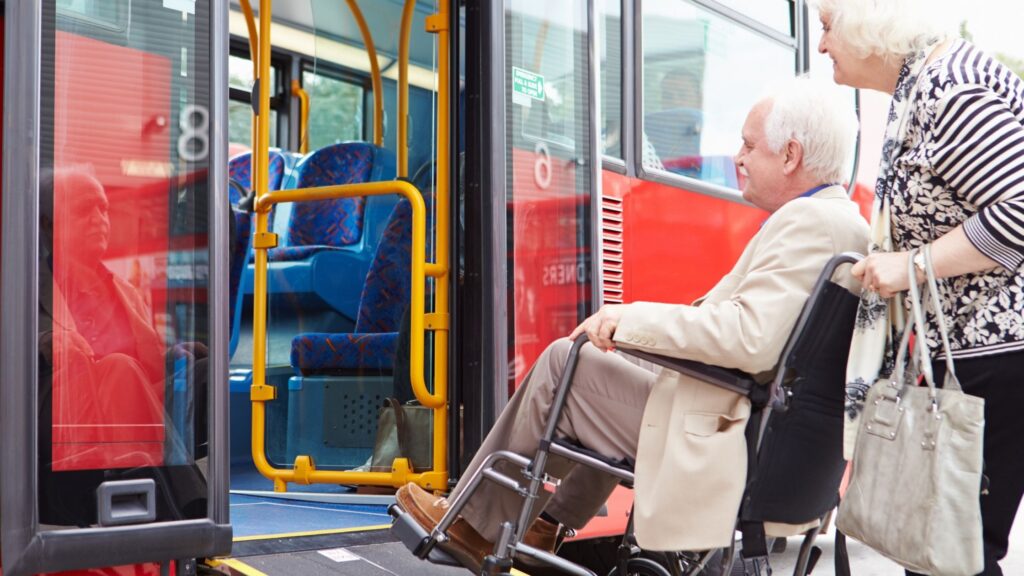ADA Compliant Vehicles and Low-Floor Transit: What Fleet Operators Need to Know
- November 14, 2025
- Blog
- Posted by Kiran Kaur
- Comments Off on ADA Compliant Vehicles and Low-Floor Transit: What Fleet Operators Need to Know
The Growing Need for Accessible Transportation: What the Data Shows

Accessibility is shaping the future of fleet planning. According to the U.S. Census Bureau, about 18 percent of Americans are age 65 or older, representing more than 61 million people. Projections show that by 2030, more than 20 percent of the U.S. population will be 65 or older. This demographic shift means mobility needs will continue to grow.
The National Council on Disability’s 2025 report found that more than 35 million adults live with mobility disabilities, making it the second most common disability in the United States. The report also noted that riders using power wheelchairs or scooters are “largely locked out” of many existing transportation services because ADA compliant vehicles are not available in sufficient numbers.
At the same time, ridership is recovering. The American Public Transportation Association reported that U.S. bus systems delivered 86 percent of 2019 trips in 2024, while demand response services reached 93 percent. Riders are returning with higher expectations for reliability, accessibility, and convenience.
Transportation also plays a role in sustainability. The U.S. Energy Information Administration reports that transportation remains the largest source of carbon dioxide emissions in the country. Expanding shared, accessible transit helps communities reduce emissions while providing more equitable mobility options.

Low-Floor vs Lift-Based Designs: What Works Best for Riders
The choice between low-floor ramps and high-floor lifts has real consequences for both passengers and operators.
- Low-floor vehicles with ramps allow near-level boarding for wheelchairs, strollers, and luggage. They deploy quickly, reduce dwell times at stops, and have fewer moving parts to maintain.
- High-floor vehicles with lifts can delay schedules, frustrate passengers, and create additional maintenance costs when lifts malfunction.
A 2024 study by the New York City Comptroller’s Office found that lifts on high-floor buses failed about 25 percent of the time when boarding wheelchair users. In contrast, low-floor buses with ramps experienced far fewer issues. These findings demonstrate how equipment choices directly affect service reliability and rider confidence.
Vehicle Features That Improve Accessibility and Operations
Accessibility is more than just boarding; it involves selecting vehicles designed to simplify operations and improve the passenger experience. Features to prioritize include:
- Gentle ramp slopes for manual wheelchair users
- Wide entryways and flat interior layouts to improve passenger flow
- Durable flooring and composite construction for long-term use
- Audio and visual stop announcements to support riders with sensory disabilities
- Securement systems that are quick for drivers to operate and safe for passengers
Simplified designs also support maintenance readiness. The 2025 State of Fleet Management Report by Fleetio found that only about 5 percent of fleets achieve near-perfect (95–100 percent) maintenance compliance, with most operating in the 75–90 percent range. By eliminating complex lift systems and streamlining design, low-floor vehicles help reduce technician workload, minimize downtime, and keep fleets on the road.

The Future of Accessible Transit: Trends Driving Fleet Decisions
Several forces are making accessibility a priority for agencies today:
- Demographic change – The aging population is increasing demand for accessible boarding solutions.
- Policy and funding – In FY 2025, the Federal Transit Administration announced $1.5 billion available through the Buses and Bus Facilities and Low or No Emission Grant Programs, including $398 million dedicated to buses and facilities. Accessibility is highlighted as a key eligibility priority.
- Equity goals – Agencies are prioritizing inclusive mobility to close service gaps for older adults, riders with mobility limitations, and underserved communities.
- Operational efficiency – Low-floor vehicles improve reliability and reduce total cost of ownership by simplifying operations.
Technology is also reshaping the landscape. Telematics and predictive maintenance give operators better visibility into vehicle health and performance. Combined with accessible vehicle designs, these tools help agencies optimize service, address issues before they become disruptive, and build long-term resilience.
How Transit Agencies Can Plan and Invest Wisely

Agencies and operators can take practical steps today to align their fleets with accessibility goals:
- Audit your current fleet – Track how many vehicles are low-floor, and measure boarding times and reliability for passengers with mobility aids.
- Target high-impact upgrades – Deploy low-floor designs on high-frequency routes and ADA compliant vans for demand-response services.
- Consider lifecycle costs – Fewer moving parts mean less downtime, lower maintenance costs, and improved schedule adherence.
- Leverage available funding – State contracts and federal programs can offset costs for accessible fleet investments.
- Engage the community – Work directly with rider accessibility committees or advisory boards to prioritize improvements that deliver the greatest impact.
- Plan for the future – Incorporate alternative fuel and electric low-floor vehicles to align with sustainability mandates and community goals.
Accessibility is not just about compliance. It is about shaping the future of mobility. ADA compliant vehicles and low-floor transit solutions improve rider experience, reduce downtime, and align with community equity goals. Operators that invest now will be positioned to serve a broader ridership base, strengthen community partnerships, and maximize long-term fleet performance.
Ready to Explore Accessible Transportation Solutions?
We are helping agencies, institutions, and private operators build more inclusive, efficient, and resilient fleets. To learn more about vehicle options that support accessibility, operational simplicity, and community impact, explore our ADA compliant and low-floor vehicles here: https://abc-companies.com/vans_shuttles/.

